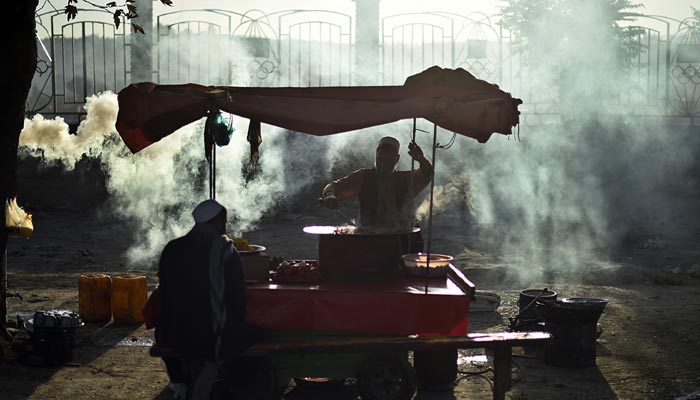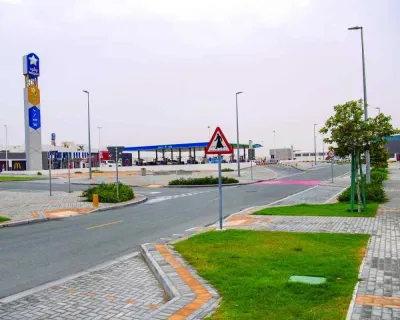An Afghan vendor prepares shish-kebab as a customer waits in Kabul on Wednesday.
AFP/Kabul
Civilian casualties in Afghanistan touched a record high in the first half of 2015, according to UN figures released on Wednesday, revealing a fragile security situation six months after the Nato combat mission ended.
Ground combat is causing more deaths and injuries than improvised explosive devices (IEDs) in a worrying sign of spreading conflict, the UN said, adding that the conflict was taking a particularly heavy toll on women and children.
The growing insecurity as Afghan forces face their first summer fighting season without full Nato support coincides with a faltering peace process, with the Taliban confronting an increasingly bitter power transition.
Total casualties - the combined number of civilians killed and wounded - between January and June increased 1% compared with the same period last year, the UN Assistance Mission in Afghanistan (UNAMA) said in a report.
The report said 1,592 civilians were killed, a 6% fall over last year, while the number of injured jumped 4% to 3,329. The figures represent an average of nine civilians killed and 18 wounded every day.
The statistics indicate rising violence as the Taliban insurgency spreads north from its traditional southern and eastern strongholds.
"The cold statistics of civilian casualties do not adequately capture the horror of violence in Afghanistan, the torn bodies of children, mothers and daughters, sons and fathers," said UNAMA chief Nicholas Haysom.
"The statistics in this report do not reveal the grieving families and the loss of shocked communities of ordinary Afghans. These are the real consequences of the conflict in Afghanistan."
UNAMA attributed 70% of civilian casualties to "anti-government elements" including the Taliban.
Female casualties soared 23% and child casualties increased by 13%, the report added, as civilians are increasingly caught in the crossfire.
Taliban power struggle
US-led Nato forces ended their combat mission in Afghanistan in December, leaving local forces to battle militants alone, but a 13,000-strong residual force remains for training and counter-terrorism operations.
The Taliban face growing internal divisions after Mullah Akhtar Mansour was announced as the new head of the insurgent movement on Friday, after they confirmed the death of Mullah Omar, who led the militant movement for some 20 years.
An increasingly bitter power struggle has broken out, casting a pall over a fragile peace process aimed at ending Afghanistan's long war.
The Taliban distanced themselves from the second round of talks that were scheduled for last Friday but cancelled after the announcement of Omar's death.
And there has been no let-up in insurgent attacks.
A suicide bomber late last month killed 19 people including women and children in a crowded market in the northern province of Faryab, as insurgents intensify their annual summer offensive launched in late April.
In mid-July, 33 people were killed in a suicide attack at a military base in the eastern province of Khost, while a few days later 25 civilians were wounded in a bombing inside a mosque in northern Baghlan province.



